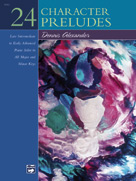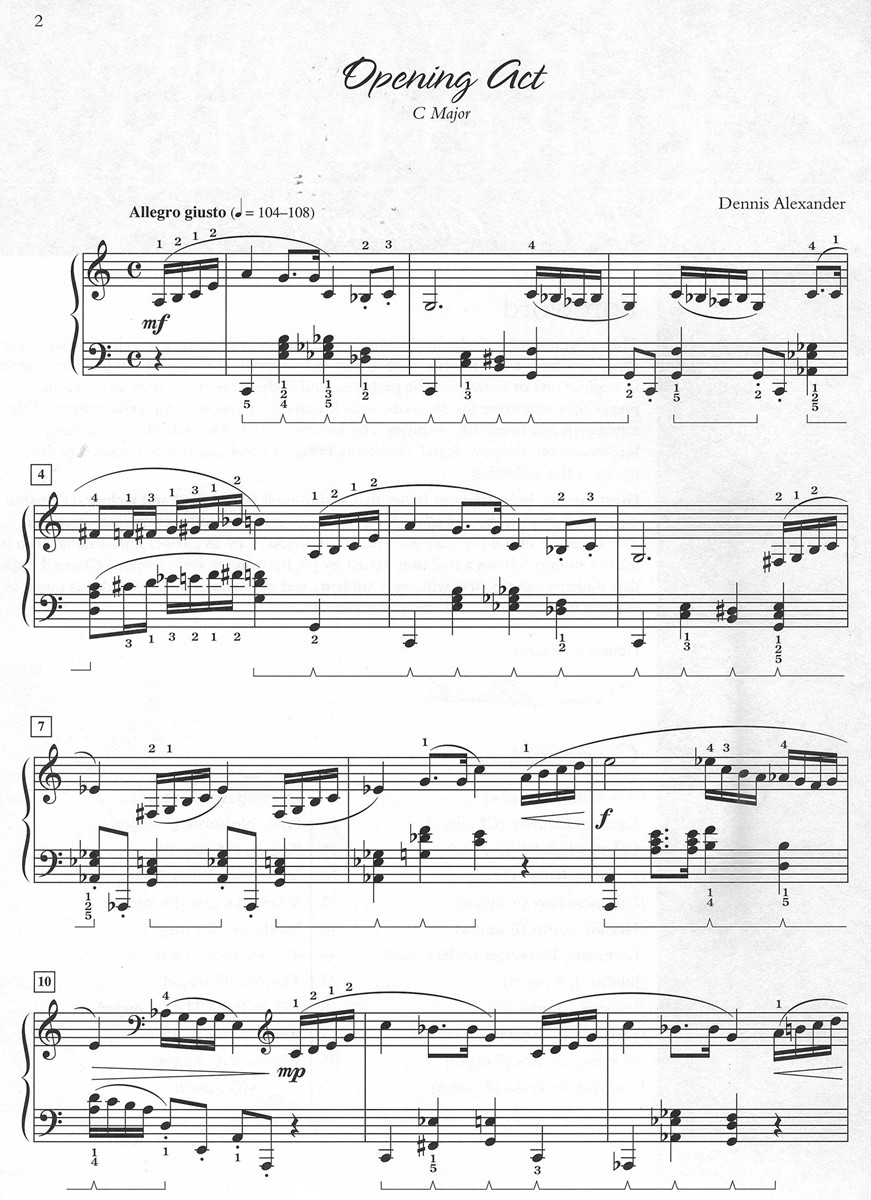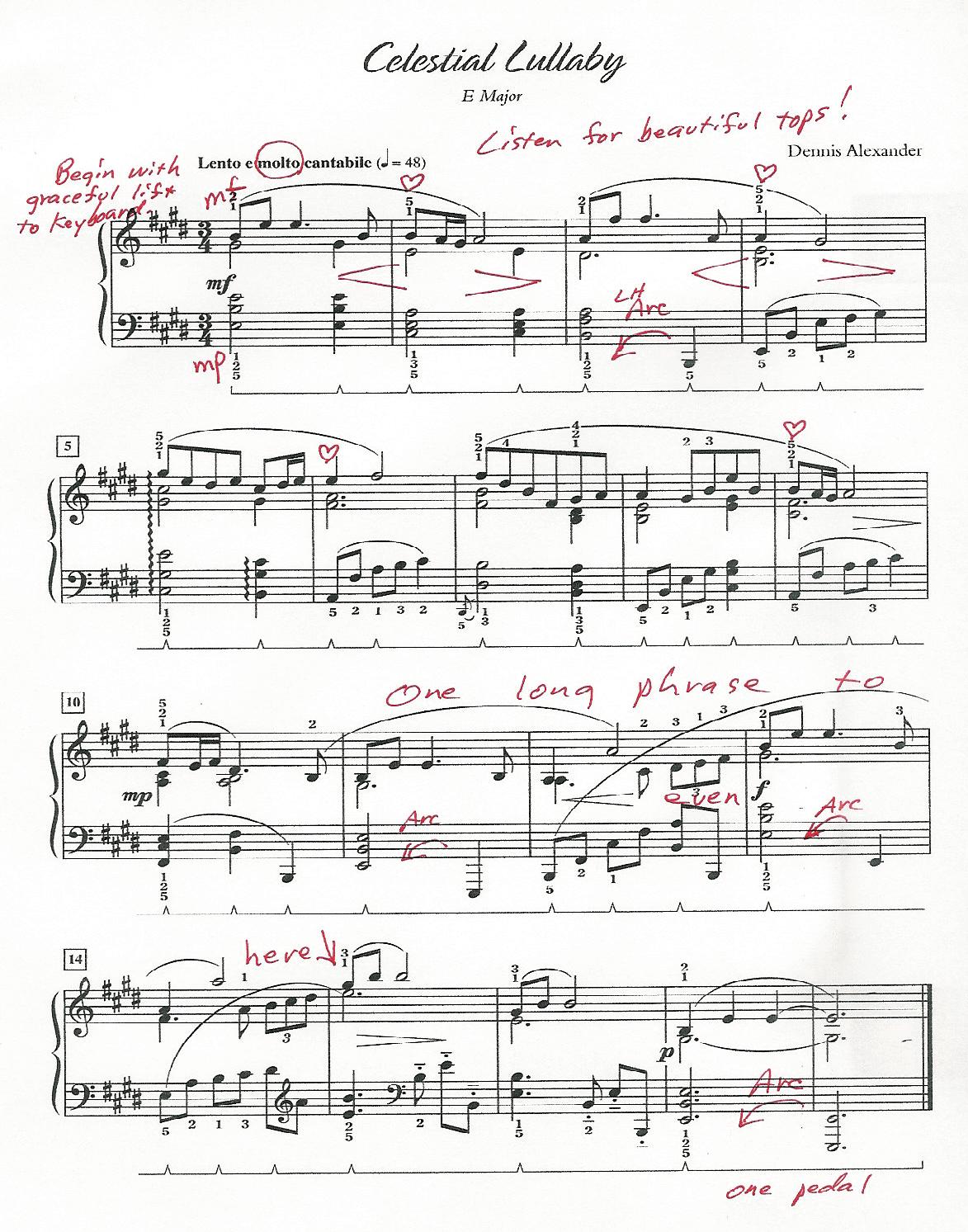Twenty Four Character Preludes

This collection of preludes in all major and minor keys was written in 2001 and contains a wealth of pedagogical challenges for the late intermediate to early advanced level student. Each piece is designed to explore one or more pianistic problems, and at the same time serves as excellent preparatory repertoire for the more complex character pieces of the great masters of the nineteenth and twentieth centuries. Great care has been taken to insure that within each key, musical and technical demands are ultimately pianistic and allow for a sensitive, successful, and personal interpretation. The sequence of the preludes (the major key followed by its parallel minor rather than its relative minor) follows a tradition started by J.S. Bach in his Well-Tempered Clavier.

"Opening Act", the first piece in this collection, is quite reminiscent of the style of Shostakovich. This piece needs to have an exacting rhythm and care needs to be taken not to overpedal, expecially when LH notes are marked staccato (ms. 3, 7, 10, 14). In ms. 2, "place" the RH G carefully, to insure that the tempo does not rush over the bar line. Ms. 10 can be tricky, and "spurt practice" here can make this quick shift of hand position easier. Practice playing just to the 1st note of beat 2, then stop and repeat several times. Then start on beat 2, and play to the 1st notes of beat 3. (Click on score to enlarge)

"Corps de Ballet" on pg. 20 is very impressionistic in character. This one requires good dexterity and real attention to voicing, as the melodic line is often divided between the hands. Begin with a crisp opening gesture in the LH octave. Play those opening chords in the RH delicately (p) against the melody line that begins in the LH. The pedaling in this piece should be observed carefully-- the staccato markings on those RH chords is there to add color and texture to the sound, even though the damper pedal is used at the same time. The performer should experiment with pedal depth here, as 1/2 or 1/4 pedal will make the scale patterns sound "glistening" without being blurry. Exaggerate the crescendo and decrescendo markings throughout. Notice that the RH in mss. 9 and 11 is all on black keys. The sudden change of tonality from Gb to D in ms. 8 going into 9 provides interesting color and variety. At the change of key signature in ms. 13, take just a little time over that double bar line and "place" the rolled chord carefully. Please note that the whole-tone scales in the RH (ms. 4 and 8) have the exact same fingering pattern all the way up, which makes this easier to play and to learn quickly: (123,123,123,123). Take some time again at the dynamic change to "mp" in ms. 15. This is called "placing it".

Of course, ms. 18 begins just like the opening, so again listen for a good balance between the hands. In ms. 26-29, the triplets can be muddy unless care is taken. Here, I like to "think" staccato on those triplet figures, even though I'm playing legato. This simply helps to punctuate the notes a little which results in a cleaner sound. Relax the tempo a little at the end of ms. 29 (notice the wavy line). In mss.30-35, practice these groups of 16th notes in blocks, one measure at a time. Go up, and then go down in blocks to really secure the patterns in the hand. Once ms. 30 is solid, the next two bars are simply a repeat an octave higher. Be careful not to accent the 3rd beat of LH in these four bars. Separate that last chord in ms. 36 from the final measure by observing the eighth rest with a clean pedal change. This piece is great fun to play, and you'll find that the patterns all lie very nicely in both hands. Don't be afraid to give the piece lots of flexibility to help portray the capricious nature!

"Celestial Lullaby" on pg. 15 is one of my personal favorites in this collection. It's an excellent study for voicing and control of linear lines. One of my favorite voicing exercises for students is to have them pretend that they're resting their RH on top of a wet sponge. Put the hand into a normal, rounded playing position and pretend that you're going to voice out the top of a major 3rd. The thumb is on C and 3rd finger on E. Imagine that you're squishing the water out of the sponge with the 3rd finger, while the thumb basically "rests" on the top of the sponge. Expand the intervals into 4ths and 5ths. When focusing more energy on the 5th finger, feel like it's an extension of the whole arm in order to gain more strength and control. When performing this prelude, study all of the phrases first and determine where the "heart" is within each phrase. In the first 3 phrase groups, the heart seems to lie on the downbeat of the 2nd measure of each group. (see score). I actually like to have students draw a little heart with a pencil during this early stage. Notice the 3-measure group in ms's. 7-9 where the heart of the phrase really occurs on the downbeat of ms. 9. Listen very carefully to balance throughout this piece. In general, the LH chords need to be at least one dynamic level softer than the RH melody line. Of course, a smooth, legato pedal technique is critical as well, so listen carefully for seamless connections between each pedal change. When I play this prelude, I feel that ms's. 11 through 15 create one LONG line with no breath-- then finally, a breath is taken at the end of measure 15. The opening melodic line in ms. 1 needs to be shaped very carefully-- move towards the longer note, which is of course a dotted quarter. Make sure that this note has more "depth" of tone than the eighth note preceding it, but then still focus the most energy on the following downbeat of measure two-- (the heart of the phrase). This piece requires not only beautiful control and good pedaling, but also graceful and elegant choreography. Keep the wrists flexible and gently "lift out" of phrase endings before starting the next phrase. Lift both hands gracefully to the keyboard as you begin this piece, and be sure to employ a nice, graceful "arc" in the LH on all of the slow leaps from one register to another. Ms. 17 needs a graceful arc in the LH when floating down to the last octave. Give full value to that last measure and don't be in a hurry to leave the keyboard. And please, ONE pedal on the last 2 bars. When leaving the keys, allow the wrists to just "pull" the fingers and hands out of the keys while slowing moving to the lap.





